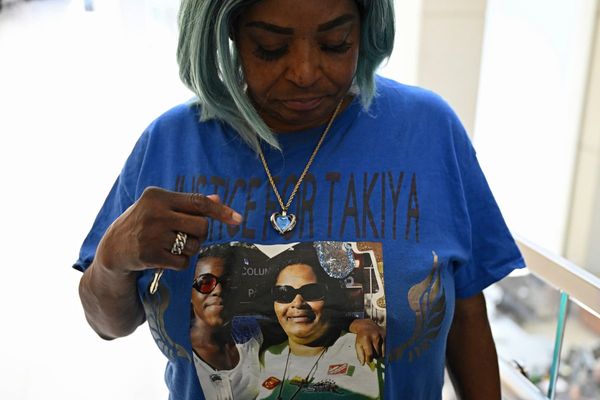
In Manchester City’s 4-0 win over Bournemouth last Saturday, Erling Haaland touched the ball eight times in the 73 minutes he was on the pitch.
For 27 minutes in the second half, he didn’t touch the ball. Rico Lewis, the young substitute who came on in the 82nd minute, managed 50% more touches than Haaland. Which means many things but perhaps most of all suggests just how radical a tactical change City are undergoing this season.
First, though, it’s perhaps worth looking at why Haaland touched the ball so infrequently in that specific game. In those eight touches, Haaland managed two shots, one of them on target, and a key pass (his only other pass was the kick-off at the beginning of the second half).
His long period without the ball came when the game was in effect over and City were happy controlling the ball. Even leaving aside his indirect involvement – the players he drew away, the space he created – Haaland had a clear and positive direct involvement in the play when City were attacking.
His previous two games for City, when he competed the full match, had been different. Against Liverpool in the Community Shield he had 16 touches but managed three shots, one of them on target, and two key passes. In the Premier League opener against West Ham he had 32 touches, including five shots, yielding two goals (one a penalty); that was far more similar to his average touches per game at RB Salzburg and Borussia Dortmund.
These are very early days but it seems unlikely the Liverpool and Bournemouth games will prove typical. Against Liverpool, although some of the reaction was probably exaggerated, neither Haaland nor City played well. Although he fluffed two decent chances, the bigger issue appeared to be that he was making runs and that the midfielders, conditioned to Pep Guardiola’s patient buildup, were not finding him. By West Ham that had changed, although there may not be many opportunities to make that sort of run behind the defensive line against teams who sit deep against City.
Against Bournemouth, the issue in part was that there was little space for Haaland, with a narrow back three and two holding midfielders playing just in front of him – although even then, by drawing defenders to him, he was opening up the possibility of space in wider areas.
More significant for City, though, was how close to Haaland Ilkay Gündogan ended up playing – surely a legacy of a team used to playing with a false 9, so the midfielders have to push into the space that would usually be occupied by the striker. It didn’t matter in a game City won comfortably, but against a higher level of opponent it may.

But even if those issues are resolved, and even if Haaland will not come up that frequently against teams who defend as Bournemouth did, this does represent a significant shift of approach for Guardiola. He has habitually had his centre-forward operate almost as a midfielder – indeed, has often used a midfielder in the role – getting on the ball, playing a lot of passes, facilitating the remorseless skeins of possession.
To move away from that towards a more orthodox central striker who wants the ball played quickly in front of him, who can play well while barely touching the ball, represents a major departure. Even if the 32 touches against West Ham turns out to be the norm, that is still roughly 30% less than Sergio Agüero averaged per game in his time under Guardiola and there was always the sense Guardiola wanted Agüero more involved in general play.
So why would Guardiola take an attacking formula that had made City top scorers in the Premier League for the past five seasons and radically change it? Perhaps it’s simply that the Premier League no longer represents success for City: more significant are the repeated near-misses in the Champions League, the failures to finish off Real Madrid, Chelsea, Lyon and Tottenham despite spells in those ties when City were on top; perhaps, for all the complexity of Guardiola’s positional play, there are times when football is as simple as needing somebody who can put the ball in the net.
But there is perhaps a broader trend here. Liverpool have signed Darwin Núñez, while Arsenal have begun using Gabriel Jesus as a fairly orthodox 9. It’s too early to be definitive, and to an extent the issue may be the characteristics of a small group of leading players, but it could be there has been a recognition that after years of diversifying the attack and focusing on the press, there is still value in more old-fashioned centre-forward virtues.
For Guardiola to countenance such a major shift at this stage of his career is remarkable and suggests just how open he remains to new ideas, how conscious he is of the danger of stagnation and the need for innovation.
This is the basis of the theory of development laid out by the advertising executive Alex Faickney Osborn in his 1948 book Your Creative Power. “The whole theory of creative tension,” he said, “rests upon the belief that in every respect and in every relation we find two elements which we cannot divorce; first, the principle of change; second, the principle of stability. The first principle is basic to our idea of evolution, growth, and progress. Without it, the world could not exist. The second principle is basic to our idea of balance and permanence.”

But in one way the signing of Haaland is a return to old principles – one prefigured, perhaps, by the signing of a dribbler in Jack Grealish the previous summer. Guardiola’s greatest achievement was at Barcelona, where the finely tuned system was challenged and augmented by the individual talents of Lionel Messi.
Structure is vital in football, and nobody wins anything with anarchy, but equally it may be that a systematised approach leads to a reliance on order, such that a team struggle to respond in adversity. It may be the sparks of true brilliance are generated by that tension between seeming opposites, between the old and the new, between a strict system and anarchic individualism.







